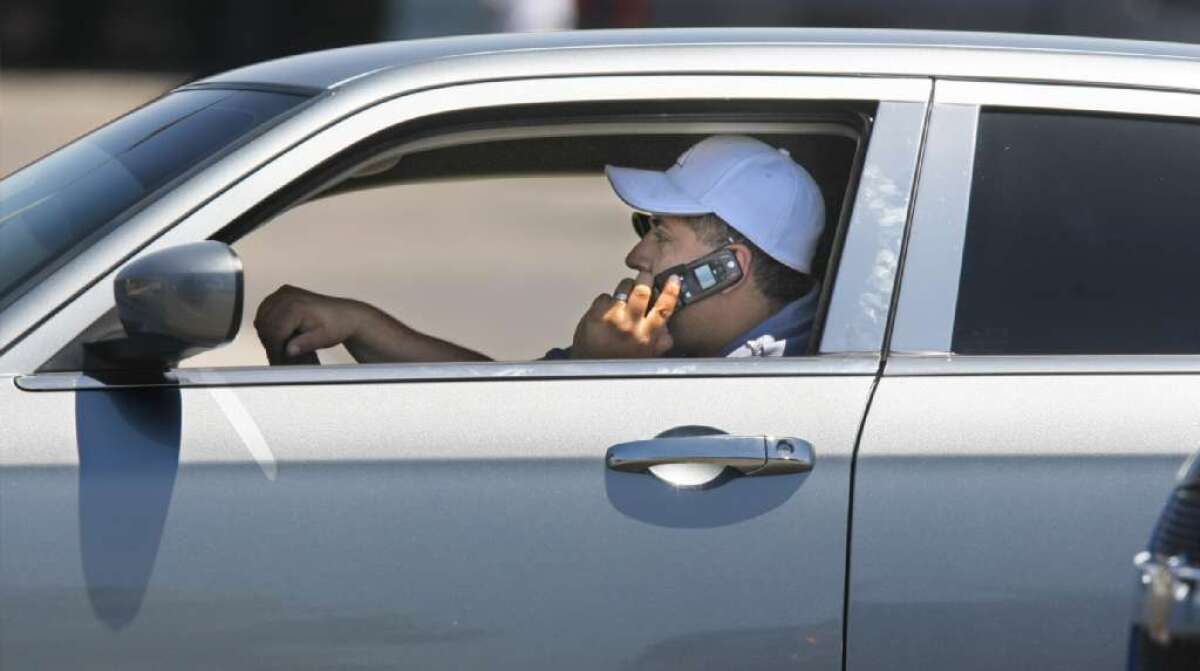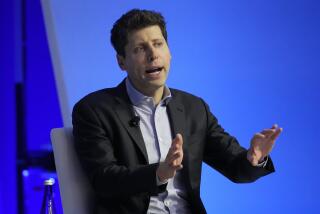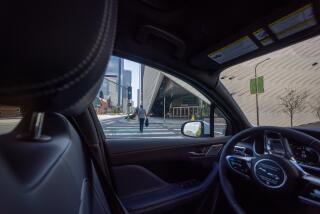AAA study on cell phones in cars: “Hands-free is not risk-free”

- Share via
Hands-free phone use while driving — for talking or, especially, for texting — is just plain dangerous, said researchers at the University of Utah who have studied distracted driving for more than a decade.
In a study funded by the AAA Foundation for Traffic Safety, a research and education arm of AAA, psychologist David Strayer of the university’s Applied Cognition Lab and colleagues found that using speech recognition technology to command devices while driving — even when eyes were on the road and hands were on the wheel — resulted in “a relatively high level of cognitive distraction.”
Talking on the phone or with a passenger was moderately distracting, the researchers found. Listening to the radio or a book on tape was not very distracting at all.
“The assumption that … voice-based interactions would be safe appears to be unwarranted,” the team wrote, in a report posted at the AAA website. “Simply put, hands-free does not mean risk-free.”
RELATED: Is your designated driver drunk?
Strayer and his colleagues conducted three experiments to “systematically measure cognitive distraction” — a task that has been difficult for researchers, they wrote, because “of the problems associated with observing what a driver’s brain (as opposed to hands or eyes) is doing.”
So the researchers tracked eye motion, measured reaction times, used electroencephalography (EEG) to gauge brain activity and made other observations as study subjects engaged in a range of potentially-distracting activities — from listening to the radio to talking on hands-free and hand-held phones to using voice-command software to solving a barrage of math and memory problems.
They tested participants under three separate conditions: as they looked at computers, operated a driving simulator or drove a specially instrumented 2010 Subaru Outback through a residential neighborhood in Salt Lake City. In each of the three experiments, using voice-recognition software proved more distracting than talking on a phone (though less distracting than solving the math and memory problems).
The idea that hands-free can be as dangerous as hands-on isn’t new. Indeed, Los Angeles Times writer Melissa Healy reported in 2008 that scientists — including Strayer — were already warning about the dangers of hands-free cellphone use. At the time, Strayer compared hands-free phone operation, unfavorably, to driving drunk. “By many measures, drivers yakking on cellphones are more dangerous behind the wheel than those who are drunk, whether the conversation is carried on by handset or headset,” Healy reported.
FULL COVERAGE: Distracted driving in California
But warnings have fallen on mostly deaf ears, Strayer said Wednesday, in a statement released by the University of Utah.
“An unintended consequence of trying to make driving safer — by moving to speech-to-text, in-vehicle systems — may actually overload the driver and make them less safe,” he said.
In a separate statement, AAA president Robert L. Darbelnet said that he hoped automakers and electronics manufacturers would start giving more thought to the distractions posed by hands-free devices in cars — and would consider disabling tools that allow drivers to use voice commands to check their Twitter feeds or send emails while their cars are in motion.
“There is a looming public safety crisis ahead with the future proliferation of these in-vehicle technologies,” Darbelnet said, adding that these “should be limited to use for just core driving tasks unless the activity results in no significant driver distraction.”
Twitter.com/LATerynbrown







